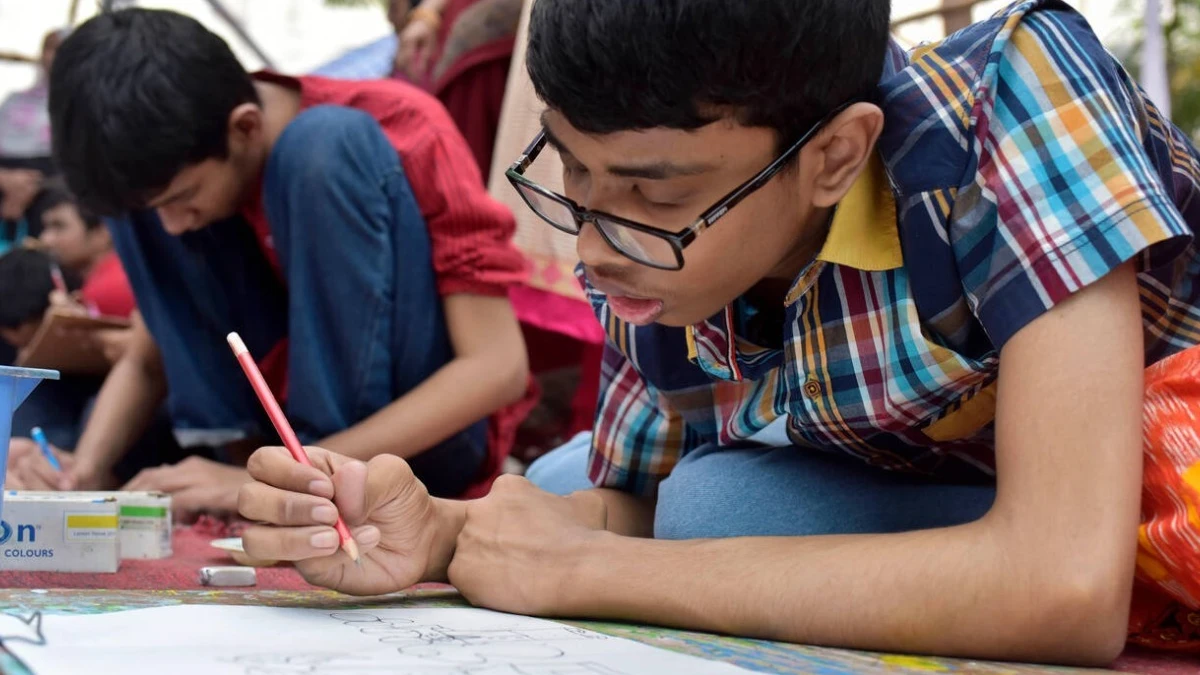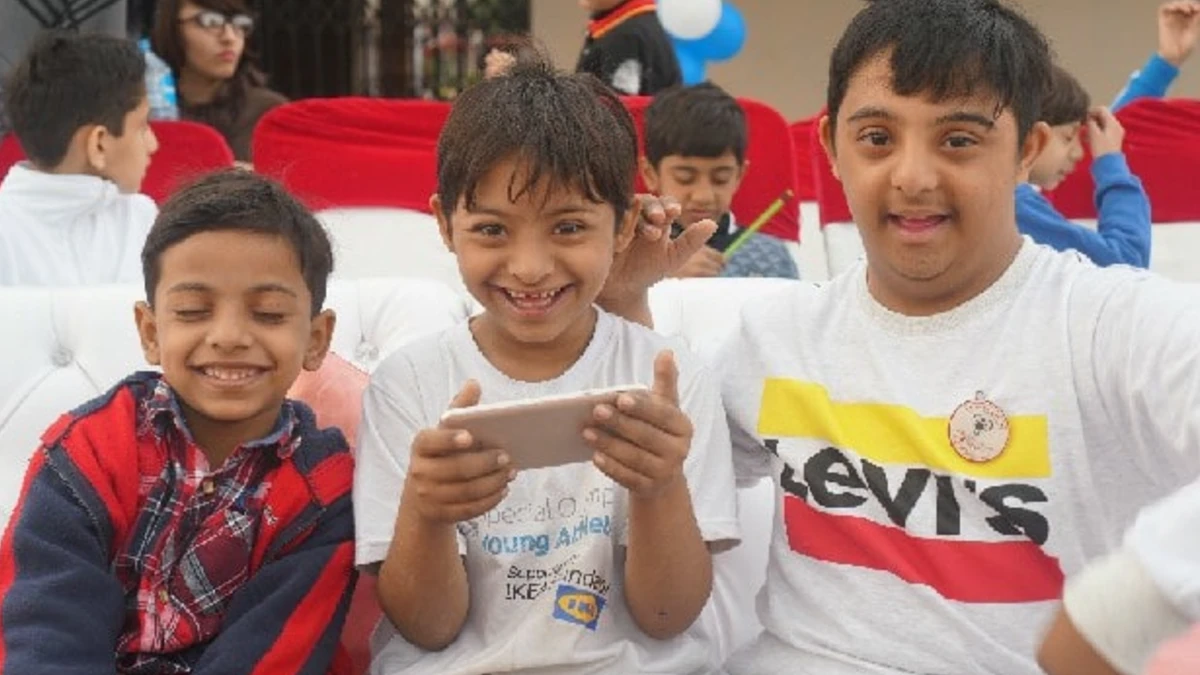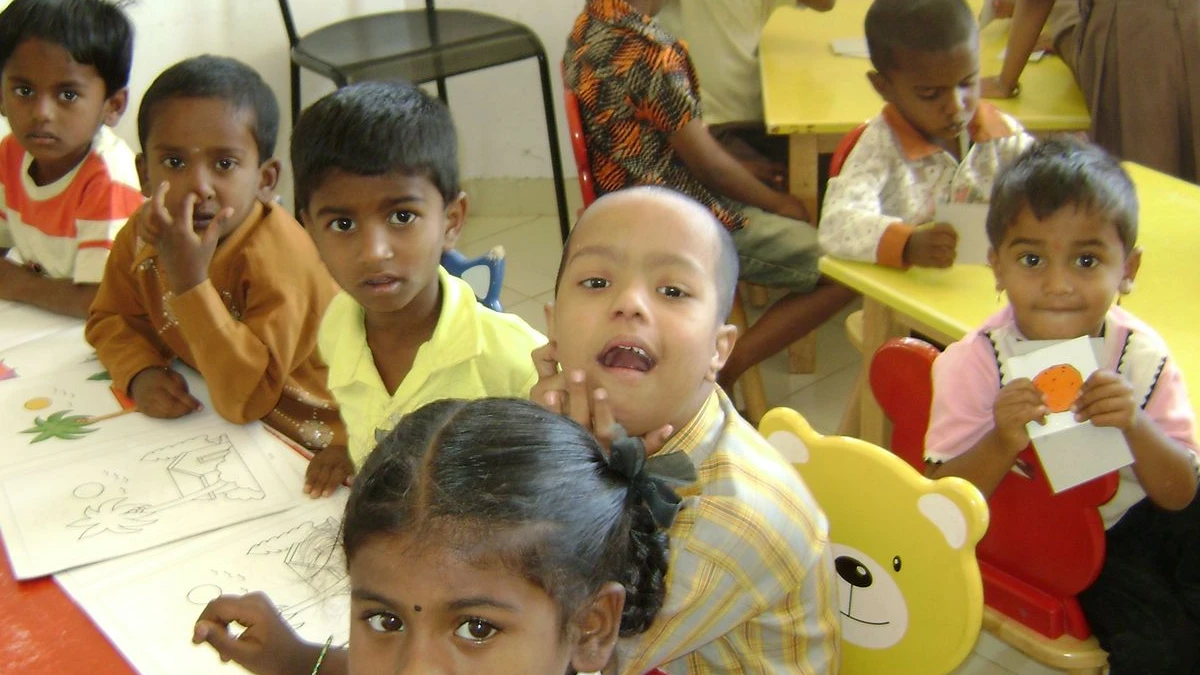Language as a Bridge, Not a Barrier
When it comes to Augmentative and Alternative Communication (AAC), language plays a pivotal role. Most AAC systems are built in English, creating a gap for children in Pakistan who grow up speaking and understanding Urdu. For these children, AAC tools that use English may feel unnatural or confusing, reducing their willingness to engage.
My Avaaz changes that. By offering Urdu audio and written text, it makes communication intuitive and culturally relevant. Children can connect instantly with the words they already hear at home and in their daily lives.
Research from the University of Karachi's Speech and Language Pathology department shows that children with autism spectrum disorder (ASD) demonstrate 40% better engagement rates when using AAC tools in their native language compared to English-only alternatives. This isn't just about preference—it's about neurological processing and emotional connection.
The brain's language centers are most active when processing familiar linguistic patterns. For Urdu-speaking children, hearing "پانی" (water) triggers not just recognition but emotional resonance. This connection is crucial for children who may already struggle with communication barriers.

The Power of the Mother Tongue
Studies have shown that children, especially those with autism or speech delays, respond better to familiar sounds and structures. Urdu, as the mother tongue for millions in Pakistan, holds emotional and cognitive significance.
Using Urdu in an AAC app enhances memory retention, emotional expression, and user engagement. When a child sees the word "پانی" (paani) alongside an image of a glass of water and hears it pronounced in a friendly voice, the concept sticks. This is not just vocabulary—it's empowerment.
Dr. Aisha Khan, a leading speech therapist in Lahore, explains: "The phonological patterns of Urdu—with its rich vowel system and consonant clusters—are processed differently by the brain than English. For children with language processing difficulties, this familiarity can be the difference between frustration and success."
My Avaaz incorporates not just standard Urdu but also regional variations and colloquialisms that children hear in their communities. This includes common expressions like "کیا حال ہے؟" (How are you?) and "شکریہ" (Thank you), making the app feel like a natural extension of their daily conversations.

Boosting Parent and Caregiver Involvement
Parents, teachers, and therapists play a crucial role in any AAC system's success. With English-only tools, many Urdu-speaking parents struggle to participate in their child's language development. My Avaaz bridges that gap.
By providing cards with Urdu script, transliterations, and native audio, parents can easily understand and reinforce learning at home. It promotes collaborative learning—turning every moment into a communication opportunity.
Fatima Ahmed, a mother from Karachi whose 8-year-old son uses My Avaaz, shares: "Before My Avaaz, I felt helpless. The English AAC apps were confusing for both of us. Now, when my son taps 'کھانا' (food), I immediately understand what he needs. It's like we're finally speaking the same language."
The app includes a parent dashboard that tracks which words the child uses most frequently, helping families understand their child's communication patterns and needs. This data is invaluable for speech therapists and educators who can tailor their interventions accordingly.
Teachers report that children using My Avaaz show increased participation in classroom activities. "The confidence boost is remarkable," says Mrs. Saima Khan, a special education teacher in Islamabad. "When children can express their needs in Urdu, they feel heard and understood by their peers and teachers."

Cultural Relevance Matters
Language is deeply tied to culture. An AAC app that includes not just Urdu text but also culturally familiar words, foods, places, and daily phrases creates a sense of belonging. My Avaaz doesn't just translate words—it speaks the child's world.
Whether it's recognizing local fruits like "آم" (mango), identifying actions like "بیٹھو" (sit), or expressing needs like "مجھے پانی چاہیے" (I want water), the app fosters independence and emotional well-being.
The app includes culturally specific categories like Pakistani foods ("بریانی", "نہاری", "چائے"), traditional clothing ("شلوار قمیض", "ساڑی"), and religious expressions ("السلام علیکم", "جزاک اللہ"). This cultural context helps children feel connected to their identity and community.
Seasonal and festival-related vocabulary is also included, allowing children to participate in cultural celebrations. During Ramadan, children can express "میں بھوکا ہوں" (I'm hungry) or "افطار کا وقت" (time for iftar), making them feel included in family traditions.
Dr. Hassan Ali, a child psychologist in Rawalpindi, notes: "Cultural relevance in AAC tools is often overlooked, but it's crucial for a child's sense of identity and belonging. My Avaaz addresses this gap beautifully."
Inclusive Education and Communication
Inclusive classrooms and therapy settings in Pakistan are increasingly adopting AAC tools. However, without Urdu support, these tools exclude more children than they include. My Avaaz is designed with inclusivity at its core—supporting children with autism, speech delay, cerebral palsy, and other communication challenges.
Schools, speech therapists, and special educators can integrate My Avaaz into their daily sessions, ensuring every child—regardless of their language or ability—has a voice.
The Special Education Department at the University of Punjab has been piloting My Avaaz in 15 schools across Lahore. Initial results show a 60% improvement in communication attempts among students using the app compared to traditional methods.
My Avaaz includes features specifically designed for classroom use: group activities, teacher controls, and progress tracking. Teachers can create custom boards for different subjects or activities, ensuring the app adapts to various learning environments.
For children with multiple disabilities, the app offers customizable settings including larger text, high contrast modes, and simplified layouts. This ensures that children with visual impairments or motor difficulties can still access the full range of communication options.
Technical Innovation and Accessibility
My Avaaz isn't just culturally appropriate—it's technologically advanced. The app uses state-of-the-art text-to-speech technology specifically trained on Urdu phonetics, ensuring natural-sounding pronunciation that children and families can easily understand.
The offline functionality is crucial for areas with limited internet access. All Urdu audio files are stored locally, ensuring the app works even in remote areas of Pakistan where internet connectivity is unreliable.
Privacy and data security are paramount. All user data is encrypted and stored securely, with options for local storage to ensure families' privacy. The app complies with international standards for children's digital safety.
Success Stories and Impact
Since its launch, My Avaaz has been used by over 2,000 children across Pakistan. Success stories include 12-year-old Ayesha from Multan, who went from zero verbal communication to expressing complex needs using the app. Her mother reports: "For the first time in her life, Ayesha can tell me when she's happy, sad, or needs something. It's changed our entire family dynamic."
In Karachi, a special needs school reported that 85% of their students showed improved social interaction after three months of using My Avaaz. Teachers noted that children were not only communicating more but also showing increased confidence and independence.
Conclusion: Urdu is Not Optional—It's Essential
In a diverse, multilingual country like Pakistan, Urdu AAC tools are not a luxury—they're a necessity. My Avaaz recognizes that need and delivers a solution that is practical, accessible, and heart-touching. By embracing the power of the native language, My Avaaz ensures that communication is not just possible—it's personal.
Whether you're a parent, teacher, or speech therapist, incorporating Urdu-based AAC into your child's routine can transform their ability to express, connect, and thrive. The future of inclusive communication in Pakistan starts with recognizing that every child deserves to be heard in their own language.
My Avaaz is more than an app—it's a movement toward inclusive communication, cultural pride, and technological innovation that serves the unique needs of Pakistani children and families. Together, we're building a world where every child's voice matters, regardless of their abilities or challenges.
